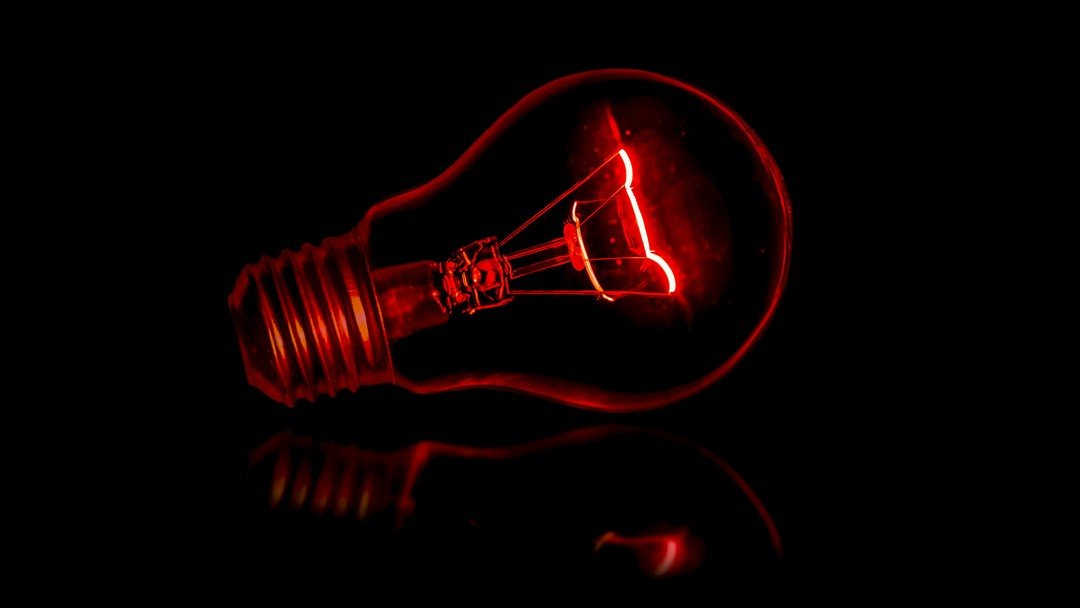Can patent protection be obtained for inventions generated by AI? Dr Thaler meets a dead-end in the UK

By Rachel Free
Dr Rachel Free dissects the recent ruling by the Supreme Court on whether an artificial intelligence system can be named as an inventor for the purpose of obtaining a patent
On 20 December 2023, the Supreme Court unanimously held that an inventor for the purposes of the Patents Act 1977 (the ‘Act’) must be a natural legal person and that, accordingly, an artificial intelligence (AI) system could not be named as an inventor for the purpose of obtaining a patent.
Background
In October 2018, Dr Thaler filed patent applications GB1816909.4 and GB1818161.0, for a food container and emergency lighting beacon, respectively. Patent applications were filed in the name of the applicant, and on Form 7, when asked to list the inventor, ‘DABUS’ was named. The application contained statements that Dr Thaler derived the right to be granted the patents as he owned DABUS. When asked to indicate how he had the right to be granted a patent, Dr Thaler wrote ‘by ownership of the creativity machine DABUS’. It is useful to note that prior to the Act, there had been a more stringent set of requirements around satisfying the comptroller that the applicant was who they said they were.
On 4 December 2019, the UK Intellectual Property Office (IPO) issued its decision that DABUS was not a person and, therefore, could not be an inventor for the purposes of sections 7 and 13 of the Act. Therefore, DABUS had no rights that could be transferred to allow Dr Thaler to apply for patents in respect of the inventions. Dr Thaler was also not entitled to a patent just because he owned DABUS.
Dr Thaler appealed the decision to the High Court and the Court of Appeal, who upheld the UK IPO’s decision. Dr Thaler then appealed to the Supreme Court, at which point the Chartered Institute of Patent Attorneys (CIPA) intervened to support him in seeking permission to appeal, on the basis that the appeal raises a nascent point of law that is of general public importance.
Supreme Court decision
The argument of accession
Dr Thaler drew on a number of arguments when appealing to the Supreme Court. The first of these was the contention that there is a property right in an invention (as stated by Briss LJ in the Court of Appeal), which is distinct from a property right in a patent or patent application.
Dr Thaler employed the argument of accession to submit that in having a property right in the invention, and as DABUS is his property, he at least derives the right to a grant of a patent, in the same way that “the farmer owns the cow and the calf”. He was also the first rightful possessor of the inventions, and first possession is widely recognised as the basis of ownership of unowned property. Dr Thaler added that if there is no proprietor of an invention created by an AI system, there is no ability to prevent the grant of a patent to a third party who illegitimately filed an application for that invention.
The Supreme Court rejected Dr Thaler’s submissions on accession. They held that the need for an inventor was essential and DABUS was not an inventor. The doctrine of accession had been misapplied, because it was one that related to tangible property and an invention was clearly intangible property. The property right was to apply for a patent where patentability was satisfied.
Additionally, the doctrine of accession worked for property where the product was of the same category as the creator. This was not the case with DABUS. Something does not become a patentable invention, just because it came from something that we recognise as being an inventor (who could have many other non-inventive ideas).
The argument that the inventor need not be human
Secondly, Dr Thaler argued that nowhere in the Act does it state that an invention has to be created by a human in order to be patentable. Even if this was the case, there is no substantive requirement for a human inventor when the Act sets out the requirements for patentability. The European Patent Convention (EPC) does not specify a human inventor and the European Patent Office Board of Appeal case J0008/20 held that AI-generated inventions are patentable under Art 52(1) EPC. Dr Thaler submitted that the UK is bound by the EPC, and that the Act is designed to have the same effect as the EPC.
On this argument, the Supreme Court held that an inventor within the Act must be a natural person. It was, therefore, held that DABUS was not a person and could not be an inventor for the purposes of sections 7 and 13 of the Act. This was consistent with an earlier decision in Yeda Research v Rhone-Poulenc [2007] UKHL 43, where Lord Hoffman said the inventor was the “natural person who came up with the inventive concept”. It was also clear from other provisions under the Act that the inventor is meant to be a natural person.
The argument that s13(2) of the Act is satisfied
Section 13(2) of the Act requires the applicant of a patent filing to provide a statement identifying the person that they believe to be the inventor. Where the applicant is not the inventor, they will need to indicate the derivation of their right to be granted a patent. Dr Thaler argued that Section 13 of the Act only requires belief that a person is an inventor. CIPA supported this submission. In the case that AI cannot be designated as an inventor, the comptroller does not have the ability to investigate the designation. He also argued that the comptroller does not have the ability to investigate any entitlement.
In accordance with rule 10(3) of the Patent Rules 2007, the UK IPO had requested that Dr Thaler file statements of inventorship to indicate how he derived the right to be granted the patent within 16 months, or the application would be withdrawn. The comptroller had held that the application would be withdrawn at the end of this 16-month period, because Dr Thaler would not be able to adequately make these filings. The Supreme Court agreed with this as an inevitable consequence of the earlier findings, on the basis that Dr Thaler had failed to identify a person that was the inventor, and because ownership of DABUS did not mean the court could accept that he was entitled to the grant of these patents.
In the European counterpart of this decision (also brought by Dr Thaler as part of his test case saga), the applicant appealed the decision to the EPO Board of Appeal, and submitted that the owner of an AI machine can name themselves as the inventor, and the EPC does not provide any way for the EPO to challenge this. Dr Thaler submitted that this is inconsistent with UK law, which requires the inventor to be the actual deviser of the invention.
Significance
The Supreme Court decision makes it clear that if patents are to be available for inventions created solely by AI systems there needs to be a change in the law. The UK IPO at first instance, the Court of Appeal and the Supreme Court looked at the question from all possible angles and agreed that an inventor can only be a natural person. Thus, there is a class of inventions, those created solely by AI systems, which are not protectable by patents in the UK. For this class of inventions, ownership is unclear because ownership of an invention is established through inventorship. Perhaps the link between inventorship and ownership should be reconsidered?
The question then arises as to whether society is happy with a state of affairs where inventions created solely by AI systems are unprotectable by patents? Is society and business happy to have inventions with no clear owner? To answer this question, we need to remind ourselves of the purposes of the patent system. These purposes include incentivising innovation, recognising human inventors, and incentivising the sharing of knowledge about new inventions. Another purpose could be to facilitate business through legal certainty about the ownership of inventions. It seems these purposes are significant ones.
It can be argued that AI systems are unable to create an invention without human contribution. There are differing views on this point. My personal opinion is that AI systems like AlphaGo, which played an innovative winning move against Lee Sedol, are able to create an invention without human contribution. However, I do accept that many disagree with me.
Looking forwards
A practical consequence of the decision is that solutions to problems found by AI systems are protectable with patents only where there is a human inventor involved. The question of how much involvement the human inventor needs to make is a difficult question and may have different answers in different jurisdictions. At least the US patent office has recently issued guidance about how to determine whether a human inventor has made a significant contribution to an AI-assisted invention so that a US patent application may be filed. A whole new question of whether US patents can be challenged on the grounds of the listed human inventor having made an insignificant contribution (since an AI system made the main contribution) arises. Applicants will need to check their policies and procedures around keeping evidence in their records from the time of creation of an invention, regarding inventorship. Whether a UK patent can be challenged in such a way is less clear.
It is worth noting that Dr Thaler has made two divisional patent applications that list himself as the inventor. It remains to be seen how these applications will proceed. A divisional patent application contains material that must be present in the parent patent application. So how these divisional patent applications are examined by the UK IPO will reveal whether and to what extent the UK IPO will consider the inventorship to be correct.
The Supreme Court’s decision in the DABUS case does set out parts of the UK Patents Act that are impacted by inventorship; this is useful for policymakers who may think of changing the law. However, the UK IPO consultation on AI and IP law in 2022 concluded that no changes to UK patent law are needed, including to inventorship requirements.
Parallels can perhaps be drawn with copyright. AI tools are widely used to generate images, video, music, 3D models and other content. There are difficulties in determining whether any copyright exists in such content, and if so, who owns that copyright. This seems to be a similar situation for AI-assisted inventions. In the UK, the government suggested having a code of conduct around the use of text and data mining for training AI models, but more recently it has been noted that a code of conduct is not workable and changes to the law may be needed.
Dr Rachel Free is a partner at CMS Cameron McKenna Nabarro Olswang LLP
cms.law/en
The author would like to thank Rachel Anderson for her assistance in writing this article.
